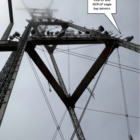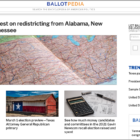If there was ever a “Golden Age of Newspapers,” it was long before my half century in journalism and if there was, “golden” referred to advertising revenue when newspapers were the primary means of getting out a commercial or personal message.
In terms of quality, I don’t think there ever was a “Golden Age,” although from our tarnished times of confronting a digital tsunami, looking back may seem brighter than looking forward.
But I’ve told many fellow journalists, interns and students that we live in perhaps the most exciting time in journalism, with the blossoming of the Internet, of any since the invention of the printing press or emergence of radio and television.
I, like many, have deep concerns about the future of journalism and newspapers, and about the impact an erosion of the profession may have on society and democracy — if that happens. The demise of newspapers has been predicted before, such as when TV news went big time in the 1950s and 1960s.
And in no way do I denigrate the thousands of hardworking professionals struggling to maintain quality in the face of cutbacks. Yet there is simply no way a large paper can do the same job of blanket coverage with hundreds of fewer reporters and editors. My experience with newspapers began when I was 10 or 11. An older cousin had me fold copies of the San Francisco News in Los Gatos. The thinnish paper was folded into the “Tomahawk fold,” wide at one end and pointed at the other. It sailed like a boomerang. Later, I helped fold the Call-Bulletin into its box fold for a Frisbee-type toss.
And newspapers failed in those days, both financially and in quality. By 1960, the Hearst Examiner, well into its classic battle with the San Francisco Chronicle, swallowed up the News-Call-Bulletin.
In high school, I got hooked on journalism (it is addictive, I’ve warned hundreds of students and interns). I became aware of the Chronicle/Examiner warfare, of the mammoth San Jose Mercury morning paper and the San Jose News evening paper, and of the Palo Alto Times — where I worked from 1964 to 1979. I left for personal reasons after it was sold to the Tribune Company and merged with the Redwood City Tribune to become the Peninsula Times-Tribune, which never succeeded in reflecting its communities and was killed in 1993.
The Internet didn’t kill those papers – it was competition or just bad journalism, or good journalism with bad management.
There were also failures of nerve. The Mercury boasted a crackerjack investigative team that took on a political scandal in San Mateo County in the early 1970s. But after months of careful digging and confronting county officials with their findings, those involved in the scandal threatened a top executive at the Mercury that they would make public a seriously embarrassing personal situation. The story was killed.
Outraged, the investigative team approached the Palo Alto Times’ editors and offered to give them the entire story. After consideration, the editors declined the offer. As a junior reporter, I was not part of the discussions, and perhaps there were good reasons other than being over-cautious. But I and other staffers were seriously disappointed when we heard about the virtually unprecedented offer from a group of great journalists.
The size of a paper’s staff is a major factor cited in discussing a purported decline in quality in coverage.
But having a large staff doesn’t assure quality. A bloated staff can get lazy; too many staffers can sap energy and blunt the edge of the best journalists. While at San Jose State College circa 1960, I became friends with an excellent reporter for the Mercury.
“This newspaper is turning me into a coffee drinker,” he complained over coffee in the Spartan Cafeteria. He said the large staff produced so many stories that pieces he worked hard on would be held for weeks, and then wouldn’t be checked to see if they were still timely.
The Mercury-News in that era had a reputation for being what some of us called a “glorified shopping news” because of its policy of running news stories about new advertisers — I actually did such a story in 1962 or 1963 when I worked in the North County Bureau as a vacation-relief writer. It leaves one with a greasy feel.
Once the Mercury ran two pages side by side with Sears ads on the bottom half and news stories about Sears managers and promotions across the top, with no “Advertisement” line. This was before Knight newspapers bought into the company and promised to make the Mercury the “L.A. Times of the north” — and long before an investor forced the second largest newspaper chain in the nation to implode.
The Mercury became part of Dean Singleton’s MediaNews Group in 2006 after a lengthy legal dispute, and has since undergone a series of staff cutbacks and merged operations typical of MediaNews. San Jose news stories are now edited in Contra Costa County. My interest in the Chron/Ex war, prior to the merger of their print and business operations in 1965, goes back to the 1950s. The Chronicle was in real trouble in the early 1950s, but then a remarkable team of journalists took over, names such as editors Scott Newhall and Abe Rosenthal and columnists Herb Caen (who returned to the Chronicle in 1958 after a stint with the Examiner), travel writer Stan Delaplane, crusty Charles McCabe and humorist Art Hoppe, among others.
While the Examiner did a better job of covering traditional stories of government news and community events, “the Chron” was simply more fun to read. It adopted “freak makeup” for its front page, abandoning the stodgy balanced layout of earlier decades One secret: During the late 1950s virtually every issue seemed to have one word somewhere in a front-page headline: SEX. It could be a story about the “sex life of the fruit fly” or some such, but it was usually there. And it sold newspapers.
But a Golden Age?
HarryPress, who five decades ago was city editor of the News-Call-Bulletin then city editor of the Examiner, also can’t think of any such age of papers or journalism: “I think when they say there was a Golden Age of newspapers that just means there were a lot of them.”
This story appeared in the fall print edition.










